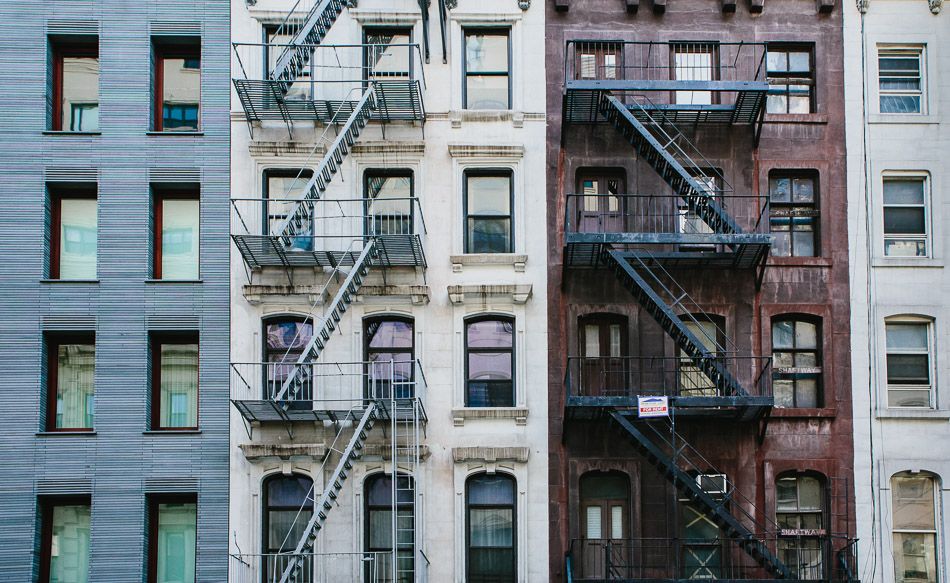Understanding Fire Escapes in Boston: Safety and Codes
Fire escapes are an essential component of building safety, especially in older cities like Boston, where many structures were constructed before modern fire protection systems were implemented. These iconic metal staircases, often seen snaking up the sides of brick buildings, serve as a vital lifeline in the event of an emergency. They provide occupants with a critical means of escape when traditional exits, such as stairwells or elevators, are inaccessible due to fire or other hazards. Despite their importance, fire escapes require diligent maintenance and strict adherence to local codes to ensure their continued functionality and safety. In this article, we’ll delve deeper into the importance of fire escapes in Boston, the relevant safety codes that govern their use, and the essential role they play in keeping building occupants secure.
The Importance of Fire Escapes in Boston
Fire escapes have been a fundamental feature of urban architecture in Boston for well over a century. Historically, these structures were designed to serve as emergency exits for tenants living in multi-story buildings, particularly in areas where space was limited, and other means of evacuation were restricted. Today, while modern buildings are equipped with internal fire staircases, fire-resistant materials, and sprinkler systems, many older structures still rely on external fire escapes to meet fire safety standards. These fire escapes remain an essential evacuation route for occupants of older buildings, particularly in Boston’s densely populated neighborhoods, where narrow streets and compact buildings leave few alternatives.
For many older apartment buildings, schools, and commercial properties, fire escapes are more than just a nostalgic remnant of the past; they are still actively used and serve as a vital backup plan in case of an emergency. In some cases, they are the only viable means of escape for upper-floor tenants or workers. Without properly functioning fire escapes, residents and building occupants could be trapped in the event of a fire, leading to tragic consequences. Their importance is further underscored by Boston’s historic nature, with many buildings still in use today that were constructed in the 19th and early 20th centuries, long before modern fire safety infrastructure was commonplace.
Maintenance and Inspections: A Critical Responsibility
Ensuring the safety and functionality of fire escapes in Boston requires regular inspections and maintenance. Given that many fire escapes have been exposed to the elements for decades, they can suffer from significant wear and tear, including rust, corrosion, and structural weakening. Harsh New England winters, with freezing temperatures, snow, and ice, can further accelerate the deterioration of metal components, leading to compromised safety.
Routine inspections are essential to detect signs of damage before they become severe. Building owners in Boston are responsible for conducting these inspections, which include checking for rusted joints, corroded metal, loose bolts, cracked or damaged steps, and weakened railings. In many cases, repairs such as re-welding joints, replacing corroded parts, or reinforcing the structure with new hardware are required to restore the fire escape to its original strength.
A fire escape that is not properly maintained can become a major liability for the building owner, potentially endangering the lives of residents and workers in the event of an emergency. Furthermore, neglecting fire escape maintenance can result in steep fines and legal penalties from the city. Boston’s fire codes mandate periodic inspections to ensure fire escapes meet safety standards, and failure to comply with these codes can lead to both financial and legal consequences.
Compliance with Boston Fire Safety Codes
Boston has some of the strictest fire safety regulations in the country, and fire escapes are no exception. The city’s fire codes specify rigorous standards for the construction, maintenance, and accessibility of fire escapes. For instance, fire escapes must be able to support a specific weight load, typically 100 pounds per square foot, to handle the stress and volume of people during an emergency evacuation. This requirement ensures that even in the most dangerous situations, fire escapes can bear the necessary load without collapsing.
Additionally, Boston fire codes require that fire escapes remain accessible at all times. This means they cannot be blocked by furniture, debris, or other obstacles that could prevent residents from reaching them quickly in an emergency. Fire escapes must also have proper lighting to ensure occupants can safely navigate their way during an evacuation, especially at night or in low-visibility conditions such as smoke-filled environments.
Building owners must keep up with these regulations to avoid putting lives at risk. Non-compliance can result in fines, legal action, and in extreme cases, the closure of buildings until the fire escapes are brought up to code. Regular inspections and adherence to fire safety regulations are the best way to ensure that fire escapes are ready to perform their critical function when needed most.
Final Thoughts
Fire escapes continue to play a crucial role in urban safety, particularly in cities like Boston, where historic buildings remain a significant part of the landscape. For many structures, especially those built before modern fire safety systems, fire escapes are a lifeline in emergencies, providing a reliable means of escape when other exits are blocked. However, their effectiveness depends on regular maintenance, routine inspections, and strict compliance with local fire codes. Building owners must prioritize the upkeep of these essential structures to ensure they remain functional and safe.
By understanding the importance of fire escapes and the responsibility of maintaining them, building owners can help prevent tragic accidents and save lives. Proper maintenance and adherence to Boston’s fire codes are not only legal obligations but also essential measures to protect the safety of all building occupants. In a city as historically rich as Boston, preserving the integrity of fire escapes ensures that these iconic structures can continue to serve their life-saving purpose for years to come.











Post Comment